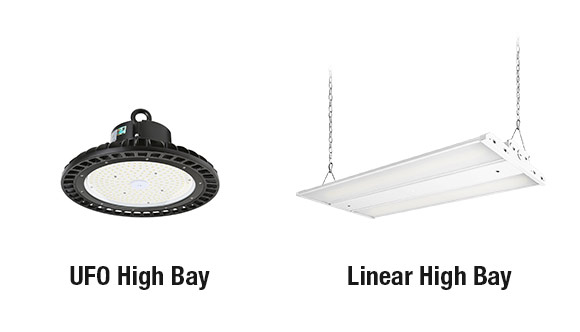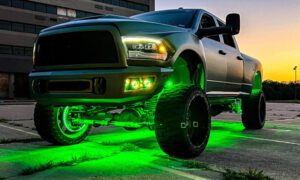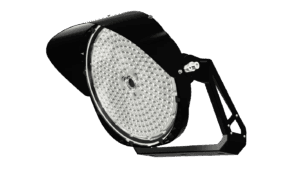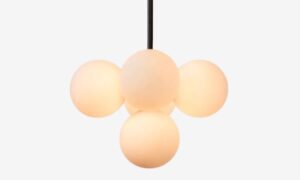When it comes to lighting large, open spaces like warehouses, gyms, factories, or even big retail stores, High Bays are the go-to option. But here’s the catch: there’s more than one type of high bay, and picking the right one can actually change the look, feel, and functionality of your space. The two main contenders? UFO High Bays and Linear High Bays.
If you’ve ever felt overwhelmed staring at lighting catalogs or scrolling endlessly through product listings, you’re not alone. Let’s break it down in real-world terms so you know exactly which one makes sense for your space.
What Even Are High Bay Lights, and Why Do They Matter?
Let’s start at the basics—High Bay Lighting is built for ceilings that are usually 20 feet or higher. You won’t find them in your living room; they’re designed for big spaces that need broad, strong, and consistent illumination.
Imagine trying to light up a basketball court with just a few lamps from your bedroom—it’s not going to cut it. That’s where high bay lights come in. They flood the area with light from high up, making everything visible and reducing shadows, which is super important for both safety and productivity.
The UFO Look – Compact and Powerful
UFO High Bays are round, compact, and tough. They’re named “UFO” because, well, they look like one—small, circular, and futuristic. If your space is more industrial or needs a rugged fixture that doesn’t take up much space, this might be your winner.
They’re perfect for:
- Warehouses with open floor plans
- Manufacturing units
- Garages or workshops
What people love about them: They pack a lot of punch in a small frame. They’re super easy to install (usually just one mounting point), and the circular beam spreads evenly, making them ideal for symmetrical layouts. If your building has tall ceilings and you want light that punches straight down with power, UFOs are a strong bet.
Linear High Bays – For Aisles, Shelves, and Clean Lines
Now picture this: rows and rows of shelves in a warehouse or a supermarket. What you need there isn’t a round beam but something long and even that flows across the aisle. That’s where Linear High Bays shine.
They work best in:
- Warehouses with long aisles
- Retail stores
- Supermarkets or storage units
Think of them like fluorescent tubes on steroids—long, powerful, and clean-looking. They offer a more “organized” lighting pattern, making them great for structured spaces where you want light exactly where the products or tasks are.
Aesthetic Vibes: Which One Looks Better?
Alright, lighting isn’t just about function anymore—people want spaces to look good, too. UFO High Bays tend to have that industrial, minimalistic look. They’re discreet and pretty sleek if you’re going for a clean ceiling layout.
On the flip side, Linear High Bays bring structure and rhythm. If you like the look of clean lines and modern architecture, these fit right in. Retailers especially love them because they make the store look polished and symmetrical.
Installation: DIY or Call the Pros?
Here’s where things get real. UFOs are usually easier to install. They’re compact and require fewer mounting points. That means less labor and potentially lower costs if you’re upgrading a large space.
Linear High Bays, because of their shape and size, might need more careful planning—especially if you’re installing them in rows across long aisles. They’re not difficult to install, just a bit more technical.
So if you’re short on time or installation budget, UFOs might edge out just a bit.
Maintenance: The Long-Term Commitment
Both UFO and Linear High Bays are mostly LED these days, which means long lifespan and low maintenance overall. But accessibility matters.
Linear fixtures, because of their larger size, can be easier to clean and maintain, especially when installed with easy-to-reach brackets. UFOs, while smaller, might require more precision if you’re swapping them out in a tight or high ceiling.
Either way, LED high bays will save you time and money on maintenance compared to old-school fluorescent or HID lighting.
Energy Efficiency and Light Quality
Both types use LED tech, so you’re good on the energy-efficiency front with either choice. But what kind of light do you actually need?
- UFO High Bays tend to be brighter in smaller areas, giving you that spotlight vibe
- Linear High Bays offer more even, widespread coverage—great for areas that need consistent light levels
It comes down to this: if you want focused intensity, go UFO. If you want soft, wide coverage, go Linear.
Cost vs. Value – What’s the Better Deal?
Price tags can vary, but here’s how to think about it. UFOs often have a lower upfront cost, especially for smaller projects. But Linear High Bays might offer better value over time if your space really benefits from the layout they support.
In other words, don’t just look at the price tag. Think about how the light impacts workflow, safety, and appearance. That’s where the real value lies.
Who You Buy From Matters Too
We can’t talk about lighting without mentioning your supplier. A solid provider will help you choose not just the cheaper option—but the right one.
Lighting and Supplies is one of those go-to names that understands what different spaces need. Whether you’re outfitting a warehouse or setting up a retail space, they offer expert insight and a wide range of high bay lighting solutions to match.
So… UFO or Linear? Final Thoughts
If you’re lighting a space that’s wide-open, rugged, or needs intense, focused light—UFO High Bays are your go-to. If you’ve got aisles, retail shelves, or need consistent coverage across structured rows—Linear High Bays will serve you better.
The truth is, there’s no wrong answer here—just different strengths. Your space, your needs, your vibe—that’s what should lead the decision.
And remember, whether it’s for function, aesthetics, or energy savings, high bay lighting isn’t just about brightness. It’s about how the right kind of brightness transforms your space.



































